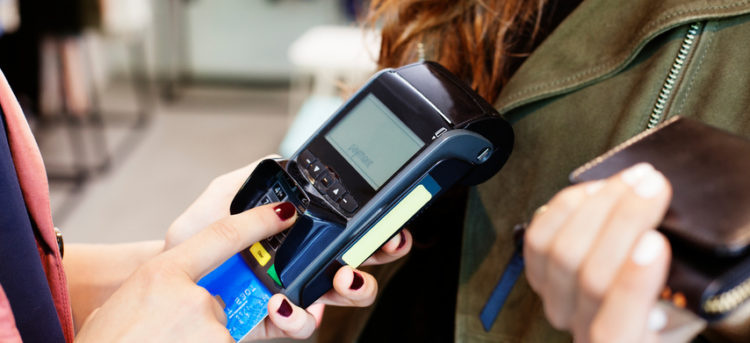In life and in business, fees are always adding up.
Take business loans as an example. To get funds, you’ll pay an interest rate for an agreed upon term. There might be an origination fee for processing your application, a late payment fee if you’re behind on payments, or a monthly maintenance charge. You have to understand what you’re actually going to pay before you sign on the dotted line.
Credit card processing fees are the same way. Here are some fees you might incur from processing credit card payments:
- Fees charged by the issuing bank: This is called the interchange fee, and it is a percentage of each transaction. There are hundreds of interchange fees, and how a payment processor handles the differences in interchange fees will determine the rate you pay.
- Fee charged by the credit card providers: Visa, Mastercard, Discover, etc. will all charge an assessment fee for each transaction made.
- Fee charged by the payment processor: Usually a dollar amount of every transaction charged, or it may be bundled into the percentage you pay per transaction.
Your payment processor may charge additional fees for chargebacks, monthly minimum/maximum, set up fees and account cancellation fees.
Payment Processor Fee Bundles
There are three main fee structures charged by payment processors.
Some small business payment processors, like Square or PayPal, charge a flat fee pricing structure (example: 2.75% per transaction). This fee includes the issuing bank’s fee, the assessment fee from the card provider, the payment processor’s fee, and any fee charged by the merchants bank.
Interchange plus is another pricing model that charges a flat fee percentage that combines the interchange rate and assessment fee, plus a dollar amount per transaction that the processor pockets. It looks something like this: 2.65% + $0.30 per transaction.
Others use a tiered pricing system, which takes into account the interchange rates for various transactions and buckets them into three potential rates:
- Qualified rate: This is the lowest possible rate when a business charges a customer’s card. Thus, it is the rate the processor advertises. Don’t be fooled, though—the qualified rate is usually only used for debit cards and non-reward consumer credit cards.
- Mid-qualified rate: More expensive than the qualified rate, mid-qualified includes rewards cards andother qualified cards that were keyed in instead of inserted.
- Non-qualified rate: Higher than the mid-qualified rate, non-qualified usually includes commercial cards and certain consumer rewards cards, keyed-in or card-not-present cards that are processed without a customer’s billing address.
The payment processor’s fee is a dollar amount in addition to the other bundled fees, so fees for a tiered pricing system might look something like this: 2.25% + $0.30 per transaction (qualified), 2.7% + $0.30 per transaction (mid-qualified), 3.25% + $0.30 per transaction (non-qualified).
Be Smart About Accepting Payments
Depending on what type of payment processor you decide to work with, there are a number of ways to save money on processing fees. Here are 6:
1. Choose the right fee structure.
Think about the three fee bundles above and what might be right for your business.
For example, If you’re selling big ticket items, it’s likely that an interchange plus pricing system will be less expensive than that of a flat fee payment processor like Square. The flat fee processor will roll all their fees into a percentage of every transaction, whereas the interchange plus processor will likely have a lower percentage fee because the processor’s cut is a separate, small dollar amount.
Know the purchase behavior of your customers. Are most of them using debit cards? Credit cards? Business credit cards? Consider looking into that data or asking your return customers what they’re using to make purchases at your business. If most are using business credit cards, you’ll want to rule out the tiered pricing system so you can avoid that expensive, non-qualified rate.
2. Negotiate lower rates.
If you’ve been working with your payment processor for some time now and you’ve increased sales volume, it’s time to negotiate. Your service provider doesn’t want to lose the business of a company that’s on the rise.
3. Encourage your customers to use debit cards.
This is important if your payment structure is a tiered pricing system. Most debit card transactions will fall under the lower, qualified rate, so if your customers use debit cards more often, you’ll save money. Consider putting a sign at the checkout counter telling customers you love cash and debit cards, and if they love your business maybe they’ll respect your payment preference.
4. Have your customers insert their card.
A provider offering a tiered pricing system charges more when there’s a larger margin for error. Have your customers insert their card into your terminal and avoid having to key in their card manually when possible.
Stay EMV compliant by using a chip reader instead of the swipe function on your terminal. It may not save you money on processing fees, but it can save you money (and a big headache) down the road should a customer dispute your payment.
5. Set and hold to a minimum for card transactions.
Don’t let your customers charge a $2.00 item to their card when you are paying at least $0.30 per transaction.This is particularly important if you’re service uses interchange plus pricing or the tiered pricing system, and less important if you use a processor charging a flat payment percentage.
6. Pass the fees on to your customers.
As of 2013, businesses in most states are permitted to charge customers a surcharge or checkout fee for using a credit card.
There’s a slew of rules governing what you can and cannot do here. The surcharge does not apply to most debit card transactions, for example. You can charge a small fee for the use of credit cards or raise your prices a small percentage and offer a discount to customers who pay with cash or debit cards. Read more about these rules here.
This article was originally written on October 5, 2017 and updated on February 1, 2021.


Have at it! We'd love to hear from you and encourage a lively discussion among our users. Please help us keep our site clean and protect yourself. Refrain from posting overtly promotional content, and avoid disclosing personal information such as bank account or phone numbers.
Reviews Disclosure: The responses below are not provided or commissioned by the credit card, financing and service companies that appear on this site. Responses have not been reviewed, approved or otherwise endorsed by the credit card, financing and service companies and it is not their responsibility to ensure all posts and/or questions are answered.